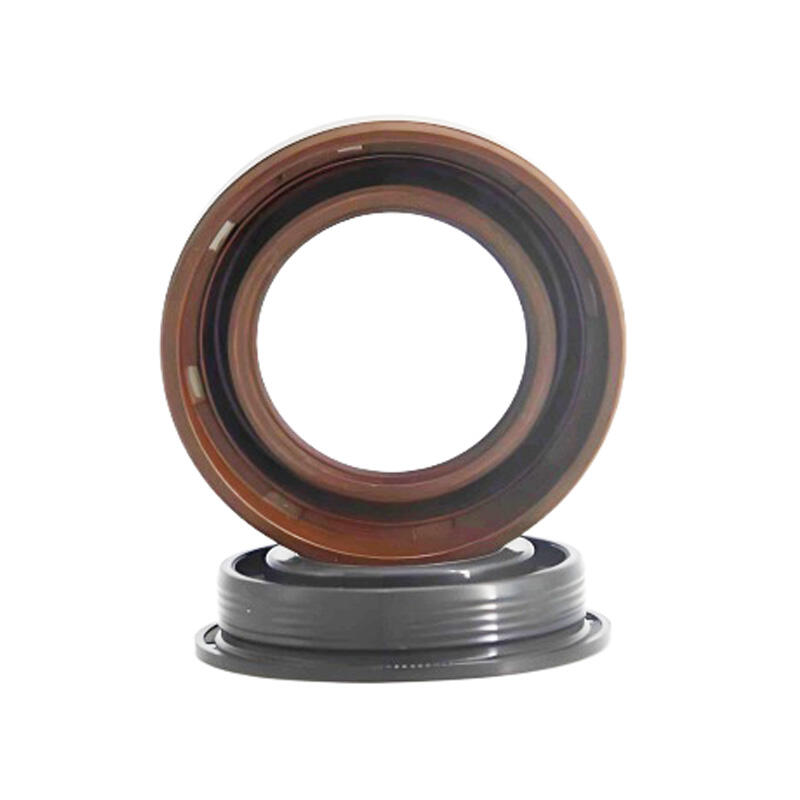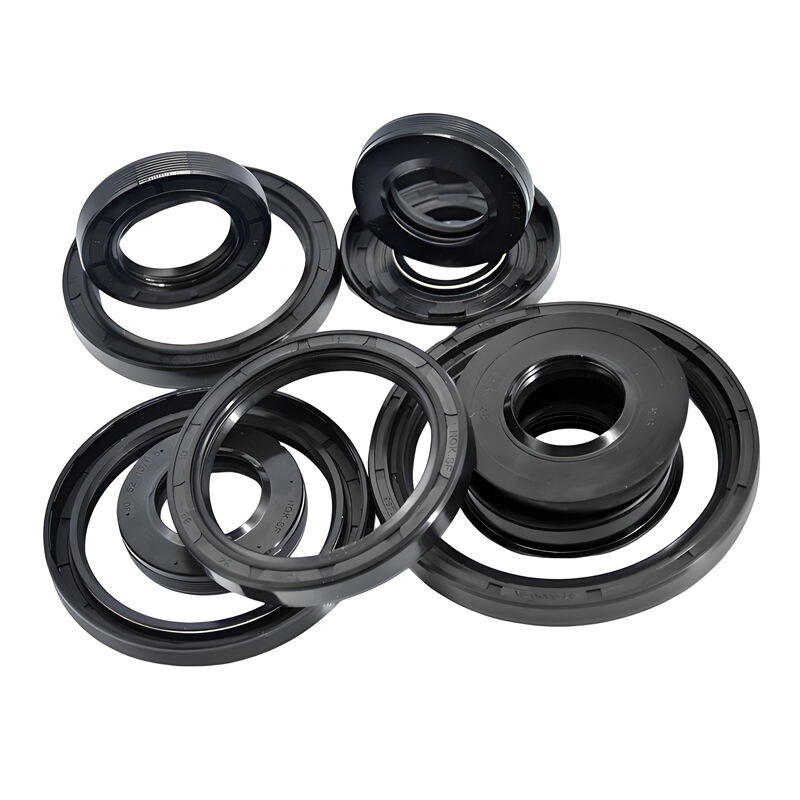Forståelse af valg af olieafskærmning til høj temperatur til industrielle anvendelser
Succesen for drift af industrielle anlæg afhænger i høj grad af pålideligheden af dets tætningskomponenter. Høje temperaturer oliegaler spiller en afgørende rolle for at opretholde udstyrets integritet, forhindre utætheder og sikre optimal ydelse under ekstreme forhold. At træffe et velovervejet valg af den rigtige olieafskærmning til høje temperaturer kan betydeligt påvirke din udstyrs levetid, vedligeholdelsesomkostninger og driftseffektivitet.
Vigtige faktorer ved valg af oliering
Temperaturområde og materialekompatibilitet
Når du vælger en oljetætning til høj temperatur, er driftstemperaturområdet måske det mest kritiske aspekt. Forskellige tætningsmaterialer har forskellige temperaturtolerancer og ydeevnesevnskaber. Fluorelastomer (FKM) tætninger kan typisk håndtere temperaturer op til 200°C, mens specialiserede silikonebaserede tætninger kan klare temperaturer over 300°C. Valget af materiale skal stemme overens med både de maksimale og minimale temperaturgrænser, som din udstyr oplever.
Materialekompatibilitet rækker ud over temperaturbestandighed. Den valgte oljetætning til høj temperatur skal også vise kemisk modstandsdygtighed over for de væsker, den skal indeholde. Nogle syntetiske olier og aggressive kemikalier kan forårsage tætningsnedbrydning, hvilket fører til forkert tidlig svigt. At forstå den kemiske sammensætning af dine procesvæsker hjælper med at sikre langvarig tætningsintegritet.
Trykkrav og driftsbetingelser
Driftstryk har betydelig indflydelse på ydeevnen for olieafskærmninger ved høj temperatur. Højere tryk kræver tætninger med forbedret strukturel integritet og specifikke konstruktionsfunktioner. Overvej både det kontinuerlige driftstryk og potentielle trykudsving under udstyrets drift. Nogle applikationer kan kræve forstærkede tætninger eller specifikke læbekonstruktioner for at opretholde effektiv tætning under varierende trykforhold.
Miljømæssige faktorer såsom støv, snavs og fugtudsættelse skal også indgå i valgprocessen. En højtemperaturolietætning, der fungerer i et rent og kontrolleret miljø, står over for andre udfordringer end en, der er udsat for barske industrielle forhold. Overvej at implementere yderligere beskyttelsesforanstaltninger eller vælg tætninger med integrerede beskyttelser, når det er nødvendigt.
Designovervejelser for optimal ydelse
Tætningslæbekonfiguration
Læbesdesignet på en højtemperatur-oliedæmning påvirker betydeligt dens tætningsydelse og levetid. Enkeltlæbedæmninger tilbyder enkelhed og omkostningseffektivitet til basisapplikationer, mens dobbeltlæbekonfigurationer giver forbedret beskyttelse mod forurening. Nogle specialiserede applikationer kan kræve brugerdefinerede læbedesign til at løse specifikke driftsudfordringer.
Læbematerialets hårdhed og fleksibilitet skal balancere slidstyrke med tætningseffektivitet. Blødere materialer giver generelt bedre tætning, men kan sliddes hurtigere, mens hårde forbindelser tilbyder forbedret holdbarhed, men måske kræver mere præcis installation og vedligeholdelse.
Krav til hus og installation
Korrekt design og installationsprocedurer for husning er afgørende for ydeevnen af olieafskærmninger ved høje temperaturer. Husningen skal give tilstrækkelig støtte, samtidig med at den opretholder passende kompression af tætningen. Krav til overfladebehandling, akselhårdhed og koncentricitets tolerancer spiller alle en væsentlig rolle for at sikre optimal tætningsfunktion.
Installationsværktøjer og procedurer bør specificeres og nøje følges for at forhindre beskadigelse af tætningen under montering. Selv mindre installationsfejl kan føre til forkert tætningsfejl, især i højtemperaturapplikationer, hvor driftsbetingelserne allerede er udfordrende.

Vedligeholdelse og ydelsesovervågning
Regelmæssige inspektionsprotokoller
Implementering af et systematisk inspektionsprogram hjælper med at identificere potentielle problemer med højtemperatur-oliedæksler, inden de fører til udstyrsfejl. Almindelige visuelle inspektioner kan afsløre tegn på slitage, nedbrydning eller ukorrekt drift. Dokumentér dækslernes ydeevnetendenser og driftsbetingelser for at optimere udskiftningsintervaller og forbedre valgkriterier for fremtidige anvendelser.
Avancerede overvågningsteknikker, såsom termisk imaging eller vibrationsanalyse, kan give tidlig advarsel om dækselrelaterede problemer. Disse værktøjer hjælper vedligeholdelsesteam med at træffe informerede beslutninger om tidspunktet for dækseludskiftning og forhindre uventet udstyrsoptid.
Udskiftning og opgraderingsstrategier
Udvikling af en proaktiv udskiftningsstrategi for højtemperatur-oliedæksler hjælper med at opretholde udstyrets pålidelighed samtidig med optimering af vedligeholdelsesomkostninger. Overvej faktorer såsom dækslets forventede levetid, udstyrets kritikalitet og planlagte vedligeholdelsesskemaer, når du fastlægger udskiftningsintervaller.
Når du opgraderer tætninger, skal du vurdere, om forbedrede materialer eller design kan øge ydeevnen eller forlænge levetiden. Den ekstra omkostning ved premium olie-tætninger til høj temperatur retfærdiggør ofte sig selv gennem reducerede vedligeholdelseskrav og forbedret udstyrelsens pålidelighed.
Ofte stillede spørgsmål
Hvad er den typiske levetid for en olie-tætning til høj temperatur?
Levetiden for en olie-tætning til høj temperatur varierer betydeligt afhængigt af driftsbetingelser, materialekvalitet og vedligeholdelsespraksis. Under optimale betingelser kan kvalitetstætninger vare flere år, mens hårde miljøer kan kræve udskiftning inden for måneder. Regelmæssig overvågning og vedligeholdelse hjælper med at maksimere tætningslevetiden.
Hvordan kan jeg afgøre, om min olie-tætning til høj temperatur skal udskiftes?
Nøgleindikatorer inkluderer synlig utæthed, øget udstyrs vibration, ualmindelig støj eller temperaturændringer i den tætnede zone. Regelmæssig inspektion af tætningsforhold, overvågning af udstyrets ydeevne og registrering af vedligeholdelseshistorik hjælper med at bestemme det optimale udskiftningstidspunkt.
Hvad er de mest almindelige årsager til for tidlig tætningsfejl?
Almindelige årsager inkluderer upassende montering, ukorrekt justering, for høj temperatur eller tryk, inkompatible væsker, forurening og utilstrækkelig smøring. At forstå disse faktorer hjælper med at vælge passende tætninger og implementere effektive vedligeholdelsesrutiner for at forhindre for tidlig svigt.

